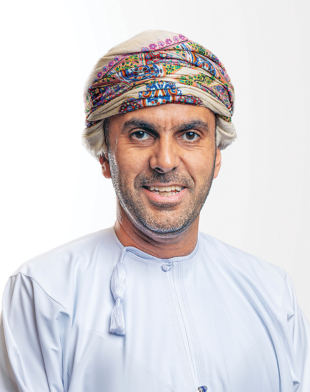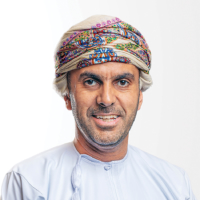Few industries have been hit as hard as air travel by the COVID-19 pandemic. As countries around the world gradually reopen, Oman Airports Management Company (OAMC), the public company that manages the country’s four civil airports at Muscat, Salalah, Duqm and Sohar — as well as three regional airports catering to the oil sector — is busy getting back into gear.

“Like most other economies around the world, the Omani economy has gone through difficult times, as demand and purchasing power were impacted by the pandemic. Our role as airport managers is not to drive economic growth or generate traffic, but rather to be the enablers of the recovery,” explained Sheikh Aimen bin Ahmed al Hosni, CEO of OAMC.
The company is set to play a key role in the diversification of the economy envisaged under Oman’s Vision 2040 development plan, primarily through its contribution to the logistics sector and tourism. al Hosni is optimistic both will recover promptly. “The measures taken in the years preceding COVID-19 have contributed to reviving our logistics sector during and after the pandemic. As for tourism, it remains one of Oman’s most promising sectors because of our exceptional location and facilities,” he said.
The new Muscat Airport City
Among recent developments in the area of logistics, al Hosni cites the launch of the Logistics Gate initiative, one of five economic clusters envisioned as part of the ambitious Muscat Airport City project. First unveiled in 2019, Muscat Airport City will cover a total area of 350 hectares. As well as the Logistics Gate, the integrated clusters will include a free zone gate, a business gate, an aviation gate and a hospitality gate. A similar airport city project is also planned at Salalah International Airport. Already, the logistics giant DHL is set to build a hub in the Logistics Gate under a contract signed in 2020. “The future is really huge for the cargo market,” noted al Hosni.
Regarding tourism, OAMC seeks to add new routes and extra flights, and launched new services with Swiss Edelweiss, Air France, Wizz Air and Fly Dubai in 2021. Prior to the pandemic, in 2019 Muscat International Airport handled almost 16 million passengers, up from 12 million three years earlier. France in particular is seen as a key market, with 68,000 visitors in 2019. The new Air France flights will also open up new opportunities for passengers from Oman to connect to destinations served by the airline’s SkyTeam partners.
According to the CEO, another vital element of OAMC’s strategy is to “enable a low-carbon airport operation by reducing carbon emissions, preserving resources and promoting green alternatives.” In line with the global aviation industry, OAMC has the goal of being net-zero for carbon emissions by 2050. The company has a comprehensive five-year plan in place to help it achieve this, which targets up to 30% of its energy needs coming from solar power within the next three years and a 30% reduction in its overall carbon footprint by 2026.
This report was produced by Global Insight and can also be read here:
https://info.japantimes.co.jp/international-reports/pdf/20220510-GI-Oman.pdf
www.global-insight.net





